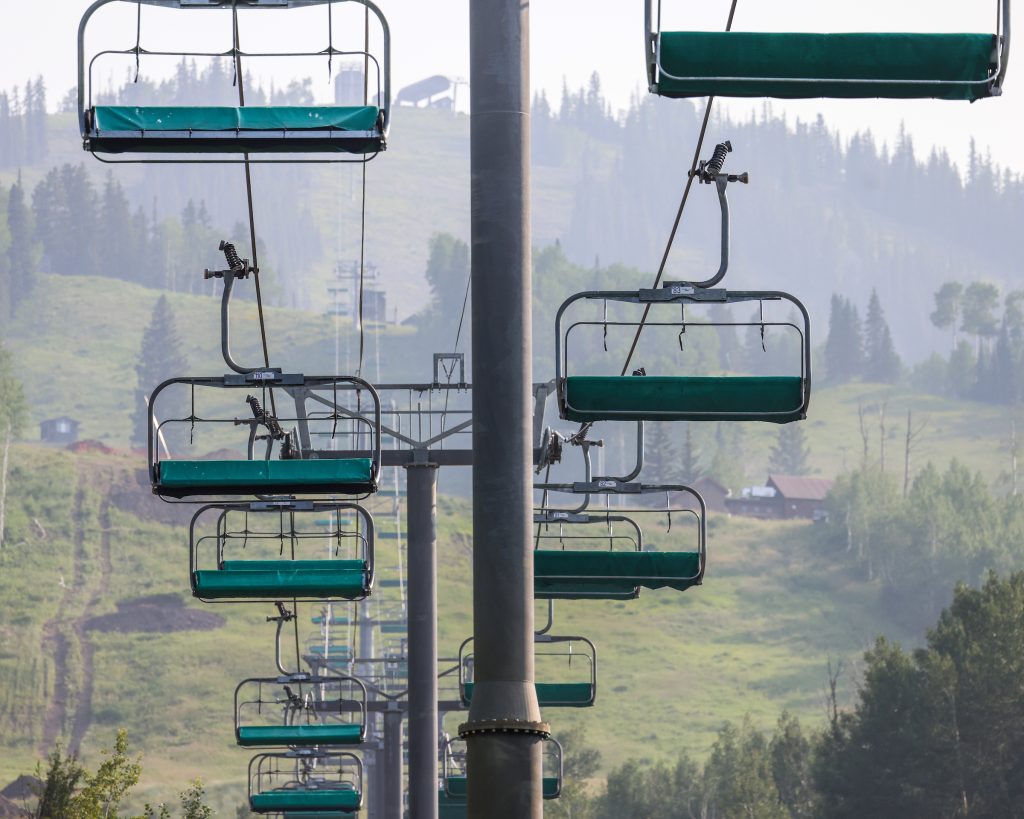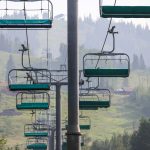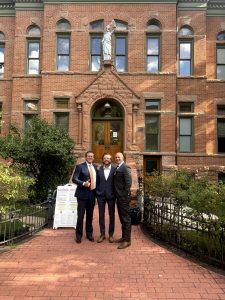Snowmass to update code under new state wildfire mandates
The town could seek more restrictive amendments

Austin Colbert/The Aspen Times
Snowmass will re-address its wildfire mitigation code in the coming months, looking to expand upon recent state mandates.
The state in June drafted a Colorado Wildfire Resiliency Code requiring all governments to adopt a wildfire code with restrictions and safety measures that meet or exceed the state code by April 2026. Snowmass Town Attorney Jeff Conklin suggested to council on Monday that the town adopt the state’s model code while layering in more restrictive local wildfire measures and restrictions, which focuses on a few fire-mitigative points.
“It has to do with fire hardening, and it has to do with site conditions,” Conklin said.
Fire hardening refers to the fire resistance of a building, including its structure, walls, and roof, while site conditions refers to the wildfire hazard posed by the grounds surrounding a property, including trees and fences, he noted.
He said the state’s model code already sets some parameters for property owners regarding these fire concepts. If an owner is rebuilding a new structure within the “wildland-urban interface areas of Colorado” where at least 25% of the walls will be replaced or one that includes an addition of at least 500 square feet, they must comply with the state-mandated code.
Snowmass must comply with Class 2 structure hardening for newly or rebuilt structures as it has a moderate or high fire hazard severity, depending on the area of town, according to Conklin.
Code details
Class 2 structures require that building materials be constructed of noncombustible materials, or a “material of which no part will ignite and burn when subjected to fire.” Noncombustible materials also include materials that pass a test metric that requires they be exposed to 1,382 Fahrenheit, among other tests.
Builders can also use fire-retardant materials or ignition-resistant materials under the Class 2 structure hardening guidelines, which “evaluates the surface burning behavior of building materials” by exposing 24-foot by 20-inch wooden building material to flame for five minutes, 30 seconds in a tube.
“Materials or products which melt, drip, or delaminate to the extent that the front flame is interrupted are not permitted,” Colorado’s code states of the requirements for ignition-resistant materials.
The code also states a series of exceptions to these rules, including materials coded in at least 0.019 inches of aluminum or at least 0.0149 inches of corrosion-resistant steel.
The state code set site area requirements for “parcels subject to this code,” designed to reduce ember ignition and flame contact with structures. Within 0 to 5 feet, the code requires parcels to use noncombustible materials, such as rock, gravel, sand, concrete, bare earth, or stone.
Ignition-resistant plantings approved by the state’s Home Ignition Zone Guide are allowed within the 0 to 5 foot zone. All other plantings must be removed. Pre-existing mature trees with at least a 10-inch diameter at 4 feet 6 inches above the ground can stay in the zone, the code states.
Tree crowns must be pruned to stay at least 10 feet from any structure, and tree branches must be pruned at a height of 6 feet 10 inches from the ground or a third of the height of the tree.
Structures with a Class 2 fire risk, such as those in Snowmass, must also remove hazardous, dead fuel, and avoid accumulation of logs, branches, slash, and combustible mulch between 5 and 30 feet of a structure, to give an approaching fire less fuel, according to the code. Between 30 and 100 feet, tree crowns must be spaced 6-to-10 feet away from each other, to keep a fire on the ground.
Council did not come to a conclusion about a timeline for their own code but suggested rolling out their own code requirements in the next three to five years.
“I would be okay with a three to five year timeline where we gave residents notice that it’ll become mandatory in three to five,” Snowmass Council member Cecily DeAngelo said in the Monday council meeting.
Council did not come to a formal decision on Monday but will continue to revisit their own code in the coming months.
Skyler Stark-Ragsdale can be reached at 970-429-9152 or email him at sstark-ragsdale@aspentimes.com.
PHOTOS: New Fire Chief Jake Andersen leads annual remembrance of Sept. 11 terrorist attacks
This was new Fire Chief Jake Andersen’s first time leading the free, public event in front of the Aspen Fire station.
Trial dismissed, all charges dropped for former Aspen coach
Over 60 prospective jurors filed out of the Pitkin County Courthouse on Monday morning after former Aspen High School Assistant Basketball Coach Chris Woodring saw his trial dismissed and his charges dropped.










